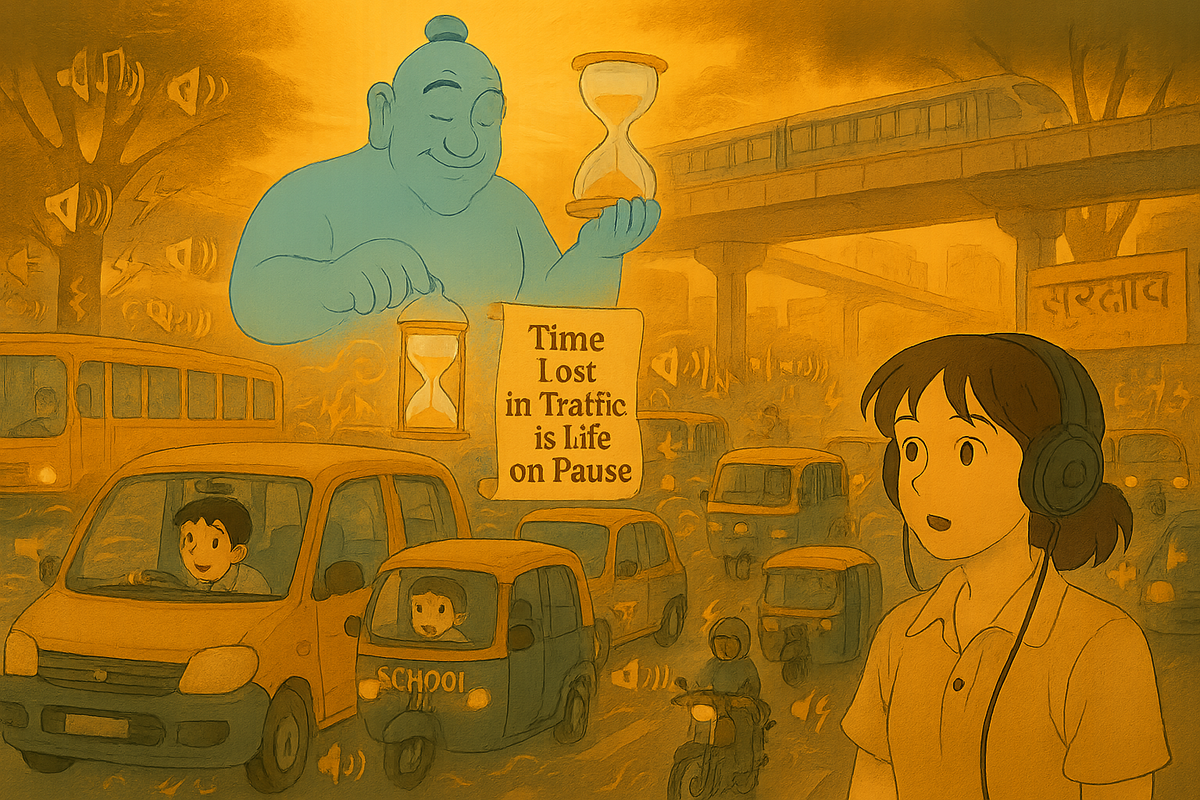India’s Worst Traffic Cities – Urban Congestion Report
Discover India’s 10 most congested cities, traffic causes, and what tech or policy can solve urban gridlock. From Bengaluru to Lucknow—data + insight.

Explore India's top 10 most congested cities, the economic cost of traffic, and what tech or policy can change the future. A report by SpotGenie’s Genie.
10 Cities With the Worst Traffic (And Why It’s Getting Worse)
🧞♂️ Hello again, traveler of tangled roads. It’s me — your SpotGenie helper — back not to rescue your car this time, but to unravel a mystery: Why do India’s busiest cities seem to be in a permanent traffic jam?
1. Introduction: Living in Jam Nation
If there’s one thing that unites Indian metro dwellers more than chai, it’s traffic. From Bengaluru’s IT corridors to Mumbai’s arterial nightmares, the daily commute is less a journey and more a ritual of resilience.
According to TomTom Traffic Index and CSE reports, commuters in major cities spend 1.5–2 hours a day stuck in traffic. That’s over 15% of waking life — stuck. Let’s find out which cities are suffering most — and why.
2. Top 10 Traffic-Choked Cities (Based on Data)
- Bengaluru – Global leader in time lost to congestion (avg. speed: 18 km/h)
- Delhi – 80% congestion in central and border zones during peak hours
- Mumbai – High density and bottlenecks on coastal arterial roads
- Pune – Vehicle registrations far outpace road expansions
- Chennai – Congested radial networks, mixed vehicle ecosystem
- Hyderabad – IT corridor with outdated road design
- Kolkata – Limited expressways, heavy pedestrian interaction
- Jaipur – Tourist influx, compact city design
- Ahmedabad – Vehicle-to-road ratio increasing rapidly
- Lucknow – Rising private car ownership, poor lane management
Sources: TomTom Index 2023, Google Maps Mobility Reports, Inrix Traffic Studies
3. What’s Fueling the Congestion?
- Urban Sprawl: Suburban migration without infrastructure growth
- Car Density: 22+ million new vehicles annually in India
- Public Transport Gaps: Many cities lack full metro or BRT integration
- Driving Culture: Lane cutting, sudden stops, and rule-bending
- Delayed Road Projects: Red tape and resource bottlenecks
4. The Economic Cost of Sitting Still
India loses an estimated ₹1.45 lakh crore annually due to traffic congestion, as reported by the Transport Corporation of India. The losses come from:
- Fuel Waste: Idling vehicles burn crores worth of diesel and petrol
- Man-Hour Loss: Late arrivals, productivity loss
- Logistics Disruptions: Slower supply chains, increased last-mile delivery cost
More than money, traffic robs India of energy, optimism, and attention span — one jammed junction at a time.
5. Can It Be Fixed?
Yes — but only with coordinated efforts. Global and local ideas offer hope:
- Singapore: Congestion pricing zones reduce peak travel
- Tokyo: World-class mass transit minimizes car reliance
- Delhi & Pune: Metro expansion, smart card integration, pilot AI traffic signals
- Citizen Role: Carpooling, non-peak travel, using route suggestion apps
6. Conclusion: What Will Traffic Look Like in 2030?
India will add 200 million more urban dwellers by 2030. Will they find faster roads — or longer waits?
Until then, your helpful Genie will be here, watching over intersections, nudging awareness, and hoping for a little more rhythm and a little less rage on Indian roads.
Keywords: India traffic congestion report, worst traffic cities India, Bengaluru traffic problem, Delhi urban gridlock, Indian metro congestion 2025, urban transport stats, traffic economic impact India, traffic jam cost India, road congestion report, SpotGenie Gyaan, smart traffic tech India, metro city traffic India, public transport policy, car density India
Have a question or feedback?
Message us on WhatsApp or visit www.spotgenie.in
Follow us on:
🅾 Instagram |
ⓕ Facebook |
𝕏 X |
▶️ YouTube |
🌐 spotgenie.in
📊 More SpotGenie Gyaan on India's Urban Challenges
- The Science of Honking – Understanding Urban Noise in India
- AI on the Rails – Can Smart Collision Tech Prevent Train Tragedies?
- Toll Booths Out, GPS In – India’s New Distance-Based Tolling Revolution
- SpotGenie: Your Helping Genie for No Parking, Towing & Emergencies
- Get SpotGenie – India's Smartest QR Sticker for Urban Car Owners
India’s traffic story isn’t just about jams — it’s about choices. And SpotGenie is here to help make smarter, kinder ones every day.



